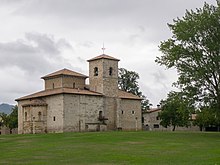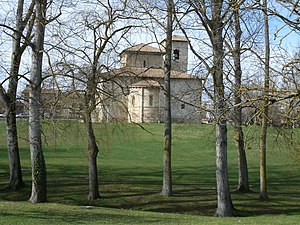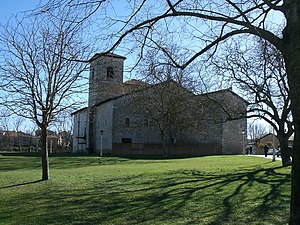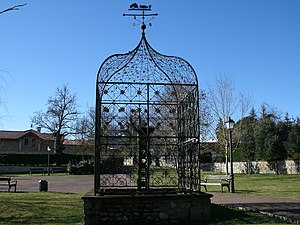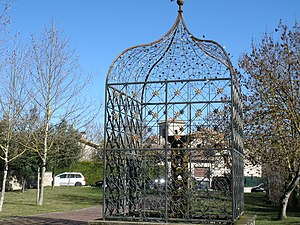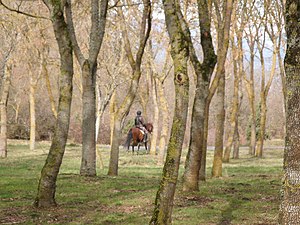
Álava or Araba, officially Araba/Álava, is a province of Spain and a historical territory of the Basque Country, heir of the ancient Lordship of Álava, former medieval Catholic bishopric and now Latin titular see.

Vitoria-Gasteiz is the seat of government and the capital city of the Basque Country and of the province of Álava in northern Spain. It holds the autonomous community's House of Parliament, the headquarters of the Government, and the Lehendakari's official residency. The municipality—which comprises not only the city but also the mainly agricultural lands of 63 villages around—is the largest in the Basque Country, with a total area of 276.81 square kilometres (106.88 sq mi), and it has a population of 253,093. The dwellers of Vitoria-Gasteiz are called vitorianos or gasteiztarrak, while traditionally they are dubbed babazorros.

Artziniega is a town and municipality in the province of Álava, in the Basque Country, northern Spain. Located in the northwest of Araba, on the border with Burgos, Castile and León and Biscay, it was at the junction between the old Kingdom of Castile and the ports of the Bay of Biscay.

The Basque Mountains are a mountain range situated in the northern Iberian Peninsula. Geographically the range is considered as the eastern section of the larger Cantabrian Range. The range runs through the Basque Autonomous Community and western Navarre.
The park of Armentia, commonly known as "El bosque de Armentia", is a gall-oak forest located between Vitoria-Gasteiz and the Mountains of Vitoria, in the province of Álava and of the autonomous community of the Basque Country in northern Spain. It has a surface area of 165 has and it is one of the main biological areas in the surroundings because it has a variety of flora and fauna.

La Florida is a park in Vitoria-Gasteiz, Álava, Spain. It was built between 1820 and 1855 in neoclassical style by the architects Angel Chavez, Juan De Velasco, Ramón Ortés De Velasco and Manuel Arana. The birth of Florida is dated 1820 when they built the existing ring that surrounds the music kiosk. For the actual 32,454 square meters land used the former convent of Santa Clara, and as much as planners have insisted later, there is nothing similar in the new green spaces in Vitoria.
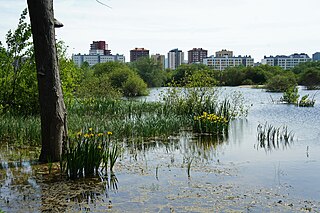
The Green Belt of Vitoria-Gasteiz is a set of urban parks with high ecological value, strategically linked by eco-recreational corridors. It is the result of an ambitious plan of restoration and reclamation on the outskirts of the city that seeks to recover the ecological and social value of this space through the creation of a nature tour around the city articulated by various enclaves of high ecological value and landscape. It is the result of a project which began in the early 1990s and was selected by the UN among the 100 best global performances of the III International Competition "Best Practices for improving the living conditions of the cities", held in Dubai in the year 2000. Currently, it has five established parks: Armentia, Olarizu, Salburua, Zabalgana and Zadorra.
The Gardelegi dump is the municipal dump of Vitoria-Gasteiz in the Spanish province of Álava. It is located 4 kilometres (2.5 mi) south of the capital. It is as large as 52 football pitches, and it stores the non-degradable materials of the area. It is named for the nearby village of Gardelegi.

Salburua is a wetland habitat on the eastern outskirts of the city of Vitoria-Gasteiz in the Basque Country in Spain. The area, which is part of the city green belt, contains lakes, meadows and oak groves. It was drained in the 19th century to transform the area into farmland. Restoration work started in 1994 and has reversed this situation and now Salburua is a Ramsar Wetland of International Importance. The Salburua marshes are considered to be "the Basque country's most valuable area of wetland", according to a Fedenatur report for the European Commission in 2004.

Abetxuko is a neighborhood and concejo in the municipality of Vitoria-Gasteiz in Álava, Basque Country, Spain. It is located north of the Zadorra river, which separates it from the rest of the city.
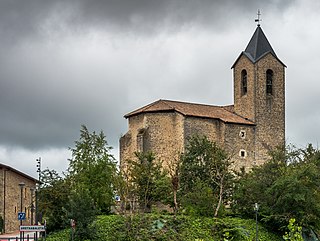
Aretxabaleta is a village in Álava, Basque Country, Spain. It is part of the municipality of Vitoria-Gasteiz, in recent decades it has been integrated into the urban area of the city.

Arriaga is a depopulated concejo in the municipality of Vitoria-Gasteiz, province of Álava, Basque Country, Spain. It has been absorbed into the city and is now part of the neighborhood of Lakua-Arriaga.
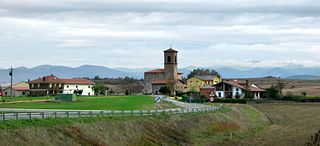
Lubiano is a hamlet and concejo in the municipality of Vitoria-Gasteiz, in Álava province, Basque Country, Spain.
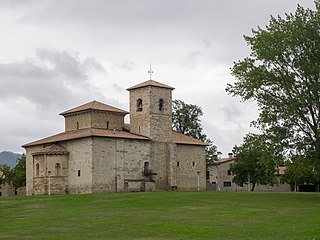
The Basilica of San Prudencio de Armentia is a basilica located in Armentia, Vitoria-Gasteiz, Basque Country, Spain. It was built in the 12th-century in Romanesque style. The basilica lies on the Camino de Santiago.
Tourism in the Basque Autonomous Community has increased considerably in recent years, and is a popular destination for tourists from Spain and France. According to data from the Eustat the number of tourists entering the region in the year 2009 was 1,991,790, with the final result still pending. 71% of the yearly visitors come from the rest of Spain; the greatest number from Madrid Autonomous Community (14.2%), and Catalonia (11.1%). International visitors make up the remaining 29% - the largest percent come from France (7.2%). 62% of the people who come to the Basque Autonomous Community visit one of the three capitals, 27% visit inland and 11% visit the coast. The average stay of the visitors is 2 days.
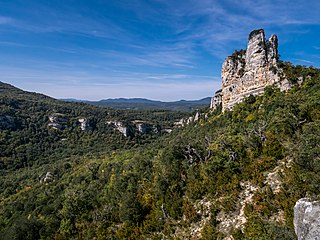
The Izki Natural Park is in Álava, Basque Country, Spain. The park encompasses the valley of the Izki river, which is mostly covered by Quercus pyrenaica forests. Korres is the only settlement within the park.
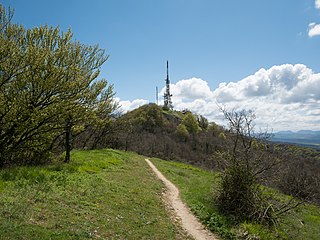
Zaldiaran is a mountain in the Montes de Vitoria range, in the province of Álava, Basque Country, Spain. Even if part of the south face of the mountain is on the Treviño exclave, Burgos; the summit itself lies in Álava. At the top of the mountain, apart from a tall metallic cross that was placed in 1950 by the Manuel Iradier hiking club, there are a few big aerials that transmit television and radio signal to Vitoria-Gasteiz.
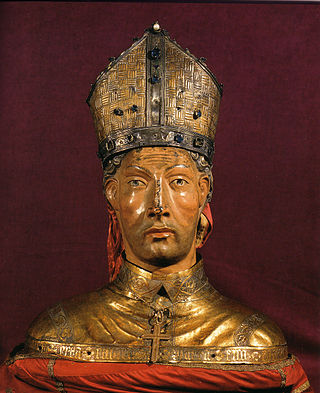
San Prudencio was a Spanish anchorite and cleric who was bishop over Tarazona. He has been the patron saint of Nájera and Álava since the mid-17th century. His festival is on 28 April.

The festival of San Prudencio, in the city of Vitoria-Gasteiz, Álava, Spain, is held around the saint's feast day. Due to its popularity, the city organizes a number of activities. The festival begins on 27 April in Plaza de la Diputación, where a stage is prepared for the traditional Basque dance groups.

Beatriz Artolazabal is a Spanish politician affiliated with the Basque National Party. From 28 November 2016 to 8 September 2020, she served as Minister for Employment and Social Policies in the Second Urkullu Government. From 8 September 2020 to 14 February 2023, she served as Minister of Equality, Justice and Social Policies in the Third Urkullu Government led by Iñigo Urkullu.



